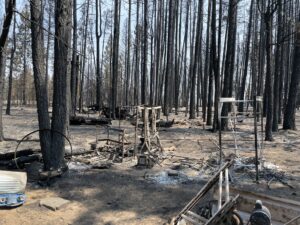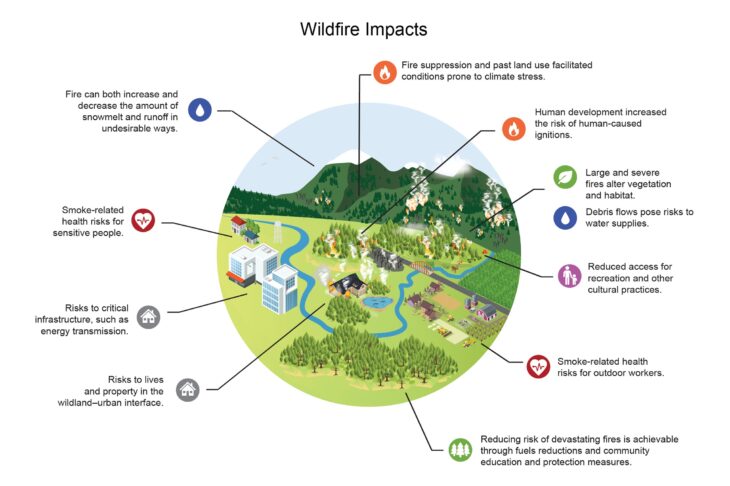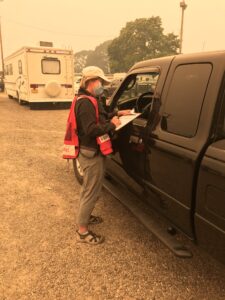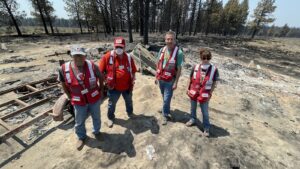Climate Crisis Leads to More Intense Wildfire Seasons. How you can Prepare.
By Harriet Vanderbilt/Rebecca Marshall
May is National Wildfire Awareness Month. The entire month is dedicated to the prevention and preparedness of a natural disaster that has become more intense and widespread in the past two decades. Wildfires contributed to the overall number of billion-dollar disasters last year. In fact, in 2023, we saw a record number 28-billion-dollar disasters.

Due to the climate crisis in recent years, wildfires are increasing in size and intensity. Their impacts also have long lasting effects, including negative impacts on the environment, the economy, and the health of all of us. Areas devastated by fire experience loss of businesses, devalued property and even loss of life. Dry landscape changes the native ecosystem. Plants no longer are able to regrow. Bodies of water become polluted with soot and ash. Wildfire smoke has long lasting health impacts on those exposed to it.*


Oregon and SW Washington have seen their share of devastating wildfires. In 2020, Oregon witnessed the worst wildfires on record. A half a million Oregonians had to evacuate their homes. Cascade Region volunteers staffed shelters for thousands of these evacuees. Hundreds of homes were destroyed. The intensity of these wildfires was attributed to straight-line winds caused by sudden atmospheric changes in addition to dry conditions.
In June of 2021, an intense heat dome raised temperatures to as high as 116 in Portland and the surrounding suburbs. Later in the summer, Oregon experienced the third largest wildfire in its history with the Bootleg Fire in Southern Oregon. Red Cross responders were instrumental in setting up shelter, providing food and comfort kits, and mental health services in Klamath and Lake Counties.

2022 saw dozens of fires that consumed over 456,000 acres. The Red Cross opened 10 shelters in one month alone when high winds kicked up across the state. Fallen trees hit power lines, sparking fires in several locations.

The Cascades Region began the summer of 2023 with four times as many wildfire responses as were fielded in 2022. Four shelters were opened before the month of August.
In August, our volunteers helped support the deadliest US fire in modern history on the island of Maui. The Lahaina fire spread rapidly fueled by winds from Hurricane Dora. Dozens of our volunteers traveled to Hawaii to support the disaster.

We anticipate another summer of high temeratures and fire danger, so what can you do? First, be fire aware. It is estimated that an average of 85% of fires are caused by humans. Fire prevention tips can be found HERE.
Prepare your home, family and community to mitigate the impact of wildfires. About 80% of homes lost to wildfire might have been spared with proper planning. There are critical tips for wildfire preparedness to follow that will give you peace of mind.
- Create a defensible space around your home by clearing brush, pine needles and other combustibles. Move flammable materials like propane tanks at least 30 feet from any structure.
- Make sure smoke alarms in your home are in working order.
- Have an evacuation kit (Go Kit) and emergency plan.
- Have an exit strategy and practice that strategy.
- Keep important documents in a fireproof safe or store them on electronic files. Keep your home insurance current, making sure it includes a wildfire provision.
- Stay informed. Follow local media and government agencies for updated information.
The Cascades Region website offers more important tips that will insure that you and your loved ones remain informed and safe. Click HERE for more information.